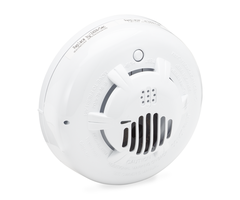Anna Faris Saved From Carbon Monoxide Incident
Posted By Michael GorisActress Anna Faris, known for her comedic roles, suffered from a not-so-funny incident over the recent Thanksgiving Holiday. The actress and 12 members of her family were the victims of a carbon monoxide (CO) gas incident. The incident occurred in a North Lake Tahoe cabin they were renting.

A representative from the North Tahoe Fire Protection District stated that the vacation cabin had carbon monoxide levels as high as 55 parts per million (ppm). Long-term indoor exposure should be no higher than 15 ppm. The structure did not have any carbon monoxide sensors installed to indicate such danger. Nevada state law requires CO alarms in all family dwellings.
Thankfully, Anna Faris and her family are okay following the incident. However, two of her family members visited the local emergency room. Doctors diagnosed them with CO poisoning, and they were perfectly fine after receiving some care. Firefighters from the North Tahoe FD immediately rushed to the cabin and saved Ms. Faris and her accompanying family shortly thereafter.
According to North Lake Tahoe Fire Official Erin Holland, the CO levels indicated inside the building would have caused a "fatality in a short period of time" had the rescue team not intervened. Faris made sure to send her sincere gratitude to the North Tahoe FD following the incident.

We have spoken about the dangers of carbon monoxide gas many times on the Alarm Grid blog. The odorless and tasteless gas kills hundreds of people every year in the United States. If it weren't for the quick work of local firefighters, a talented actress and her family may have fallen victim as well. They are lucky to be alive, and the rescue team deserves praise for the fact that any exposure was kept as minimal as possible.
As you know by now, it is crucial to have carbon monoxide sensors installed in your home. Ideally, you should have CO detectors enrolled with your security system. By pairing these devices with a system that has active monitoring service, you and/or a central station can receive alerts regarding any of your CO sensors that activate while you are away.
If your home has hardwired high-voltage CO sensors (as is required in most jurisdictions), you can indirectly integrate these devices with your alarm system using a wireless takeover listening module. We offer variants for 345 MHz, and 433 MHz wireless alarm systems. And if you don't have hardwired CO detectors in your home, then we sell plenty of standalone units that pair directly with alarm panels like any other sensor.

When traveling, make sure that all on-site CO sensors and smoke detectors are working properly. If you have any doubts, ask the building operators to perform a test. This is a reasonable request that any property manager should be able to accommodate. Please note that we ARE NOT suggesting that you bring canned CO gas or canned smoke on an airplane for testing purposes. That could get you into a lot of trouble. Make arrangements for on-site testing, without bringing your own supplies.
It may also be a good idea to buy a cheap conventional battery-operated carbon monoxide sensor when you get to your vacation site. It may turn out that the place you visit does not have CO detectors. This was the case with Anna Faris and her family. We do not sell standalone battery-operated CO detectors on our website. But you can get most models between $10 and $20 from most department and hardware stores. Some models will even show you the detected parts per million for CO gas! If you are staying in a larger property, you may want to obtain multiple sensors.
Remember that our goal at Alarm Grid is to keep you and your loved ones safe. If you ever need help choosing a carbon monoxide sensor for your system, or if you would like to learn more about how we can monitor your home, please email us at support@alarmgrid.com. You are also invited to call us at (888) 818-7728 during our usual business hours of 9am to 8pm ET M-F. We look forward to hearing from you!




